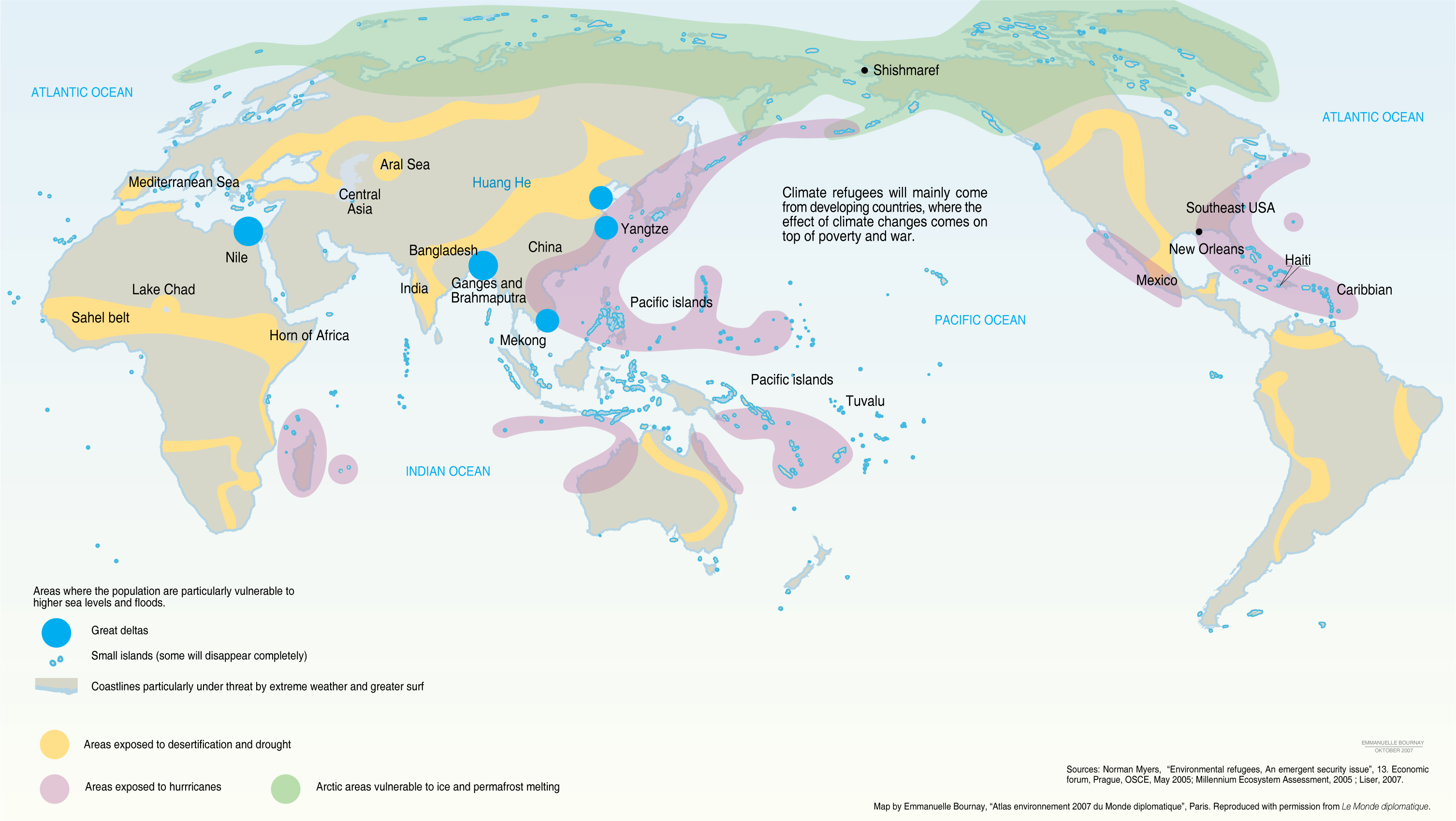The early French geographers developed the theory of "possibilism" according to which one "la nature propose, l'Homme dispose", in English, "Nature purpose, human dispose of". People have elaborated some livelihoods which permit them to get some incomes from their environments and through which ones their have modified the landscapes.
However, because of the shrinking ecumene, desertification and sea level rise, people living next to the shore and on the side of the deserts are currently facing some changes in their environments. Their livelihood are less and less adapted to their new environments affecting their incomes and increasing the outputs. Bestelmeyer (2005) states that desertification affects human productivity. Indeed, the shrublands do not feed the livestock as much as the grasslands do. Moreover, Kulpraneet (2013) has assessed the adaptation cost of some Thailandese coastal household to more than 345 000 Bath for the next 30 years. This cost represents more than 150% of the GDP ppp per capita of the year 2010. For these populations, the sea level rise represent an important over-cost. As much as money which will not be invested, as much as investments which will not give any incomes. Shrinking ecumene affects wealth.
Therefore, where the ecumene is shrinking the incomes are decreasing. In opposition with the inhabitants of the small State Islands, most coastal population are not suddenly affected by these slow process. They are affected but do not appears as direct environmental refugees. However, their decreasing incomes could motivate the young generations to move for some higher financial gains. Already, because of the decreasing productivity of the Malian Sahel there is a growth of the youngest generations' mobilities (Sauvin-Dugerdil, 2013). Moreover, even if Bailey (2010) underlines that the "global south" is more affected by the climate-change, he states that some migrations are motivated in USA by the growth of insurances costs where the sea level rises become serious. These people, do not appear as "climate refugees", but their mobilities are the consequence of the global environmental change. This could answer the question of Fred Pierce (2011) in his article Searching for the climate refugees, "where are the climate refugees?".
Bibliography:
Bestelmeyer, B.T. 2005. Does desertification diminish biodiversity? Enhancement of ant diversity by shrub invasion in south-western USA. Diversity and Distribution. No. 11. p45-55
Bailey, A.J. 2010. Population Geography and Climate Change. Progress in Human Geography. No.35. Vol.5. p686-695
Bailey, A.J. 2010. Population Geography and Climate Change. Progress in Human Geography. No.35. Vol.5. p686-695
Kulpraneet, A. 2013. Coastal household adaptation cost requirements to sea level rise impacts. Mitig Adapt Strateg Glob Change. No.18. p285–302
Pearce, F. 2011. Searching for the climate refugees. NewScientist. No.2810
Sauvin-Dugerdil, C. 2013. Youth mobility in an isolated Sahelian population of Mali. The Annals of the American academy of political and social sciences. No.648


